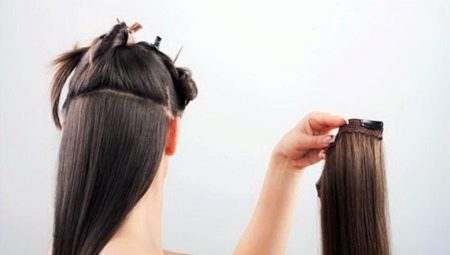Women are rarely quite happy with their appearance, so they are constantly looking for ways to increase both the thickness of their hair and their length. A good alternative to extensions is the use of overhead strands of natural hair. They are very easy to attach, easy to wash, comb and stack.
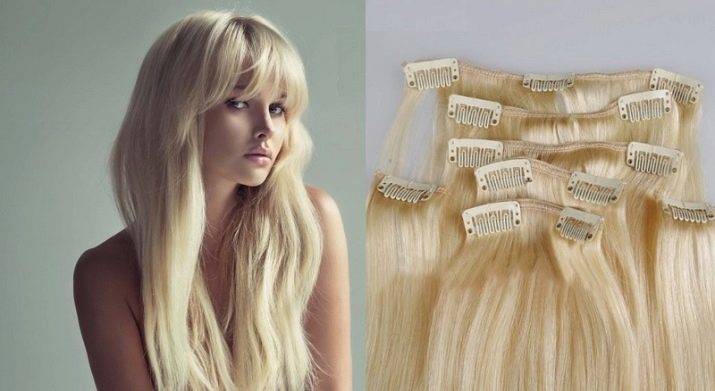
Features
As false hair use natural and artificial curls. The former have a number of undoubted advantages: they can be stacked, curled and straightened, moreover, even a coloring procedure is allowed to achieve complete identity of the shade of native and false hair.
The main difference between natural hair with a hairpin is their appearance, which even the highest quality synthetic strands will not be able to repeat. Whatever raw materials are used to create tress, they will not be obedient in any case, so you won’t get the perfect styling.
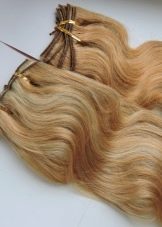
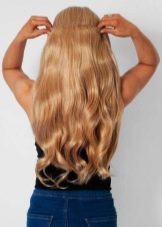
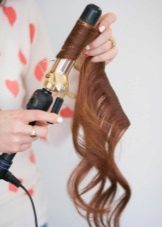
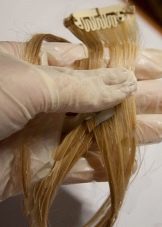
Thus, when using natural hair, you can achieve maximum resemblance to native hair, perform a variety of styling, curl, straighten and, if desired, quickly change the hairstyle and shade of hair.
Natural hair is much more expensive than artificial, because it looks more natural and with proper care last much longer.
Most often, natural curls are fastened with hair clips. In this case, the strands are sewn onto a strip of fabric along with several latches of the “clack-clack” type. This is very convenient, because you can attach such curls and remove them yourself, without resorting to the services of professionals.However, with mechanical impact, they can slip off the head.
False locks on hairpins made of natural hair are the best way to change your appearance in a matter of minutes before a holiday or some other special occasion.
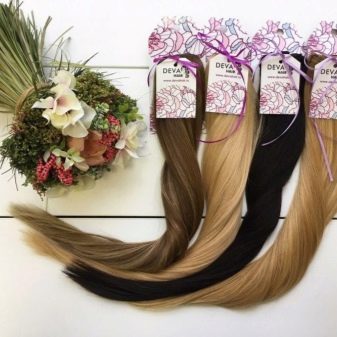
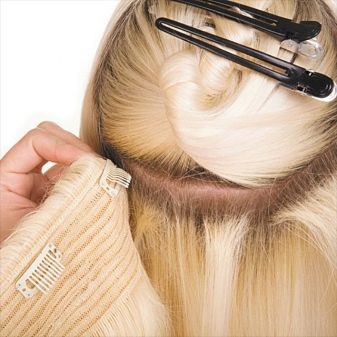
Tresses on hairpins are produced in several versions:
- long wide stripes;
- medium sized pieces;
- short and narrow locks.
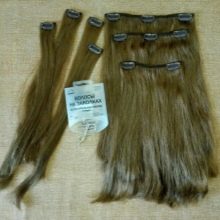
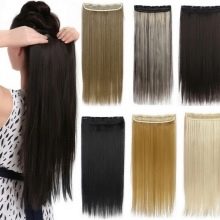
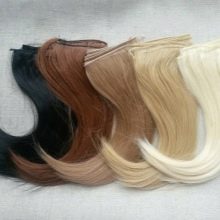
How to distinguish from artificial?
Visually artificial and natural strands can be very similar, so it’s quite difficult to see the difference, especially for an inexperienced person, but if you hold two locks of about the same size in your hand, you will feel the difference right away: synthetic curls are made from algae, which makes them much easier natural.
False strands are often used at photo shoots, so keep in mind that artificial hair, even the highest quality, will have a well-defined shine when the flash is used, but natural lining will not differ in any way from your own curls.
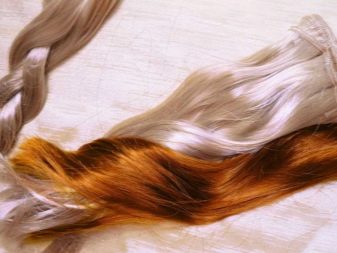
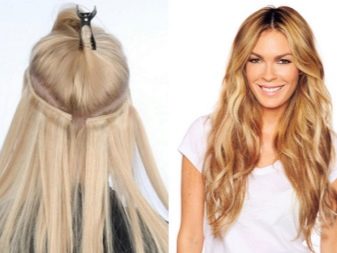
If you buy hair for daily wear, then it is definitely better to buy natural ones. They will last you from six months to several years, while synthetic ones retain their original appearance no more than a couple of months, and more often become crumpled and lifeless after a few days.
Natural hair is much better than artificial hair, it looks more natural and lasts longer, respectively, and the price of such tress is quite high. This leads to the fact that many unscrupulous manufacturers under the guise of natural hair offer synthetic or mixed tresses.
The easiest way to distinguish natural from synthetic hair is to cut off a couple of hairs and set them on fire. If you have natural curls in front of you, then the fire will be flickering, short-lived, leaving a pungent smell of burnt meat. Artificial hair gives a sparkling flame and burns to the very end of the hair, and the smell is quite peculiar, reminiscent of the one that emits plastic when melted.
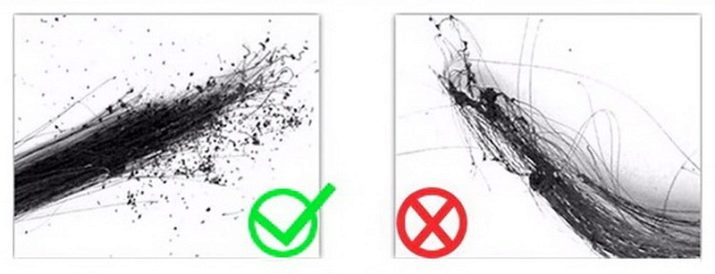
There are other methods for distinguishing synthetic hair from natural hair.
For starters, you can evaluate the appearance of the strands. Synthetic look perfect: lie "hair to hair" and shine. Natural hair often has split ends, they do not fit in perfectly even styling and do not have a pronounced shine.
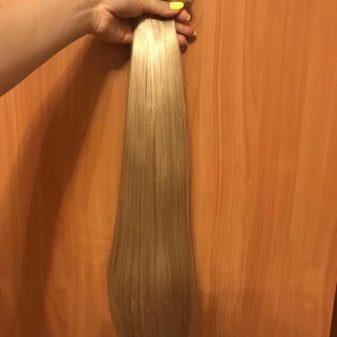
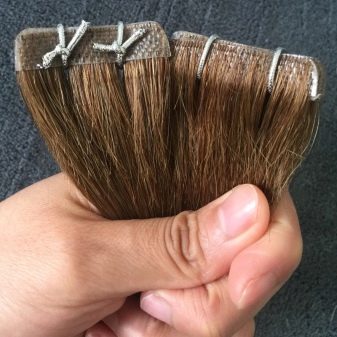
Perform a tactile test, that is, simply feel your hair: natural ones are usually thicker and softer than artificial ones. Although here there are some difficulties, for example, the hair of Slavic girls is much softer than that of Asians. If the hair is often dyed, then they become stiff, so their structure, even if the curls are natural, can vary. Therefore, even in the store, swipe the tail from the bottom up with vigorous movements: natural ones are immediately electrified and rise, while artificial ones do not change their position.
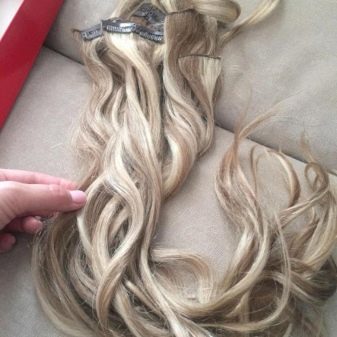
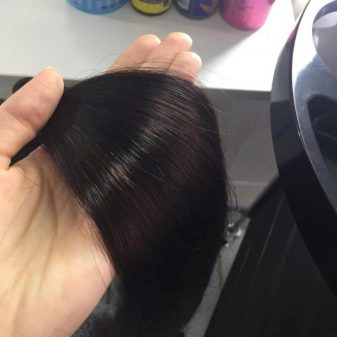
A very good test can be made with a curling iron: usually nylon hair at the moment of twisting begins to melt immediately, and if heat-resistant protein is mixed with raw materials, such a curl at a temperature of less than 120 degrees will simply not curl. You can check the hair for naturalness with a ceramic straightener: artificial hair when it is wound up immediately starts to burn.
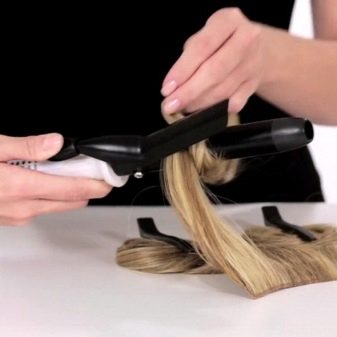
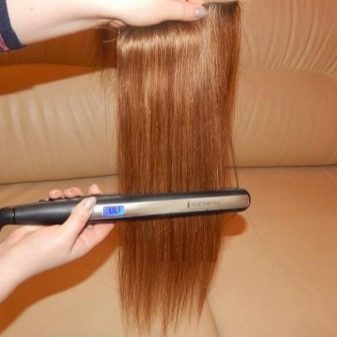
The surest way to make sure that there is no synthetic component is staining. Take a small lock of hair and dye it. If the hair dyes evenly, then you have natural material, and if it shines with a variety of shades, you will see a lot of very different synthetic impurities.
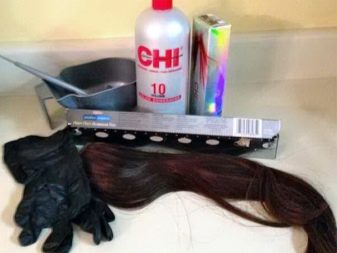
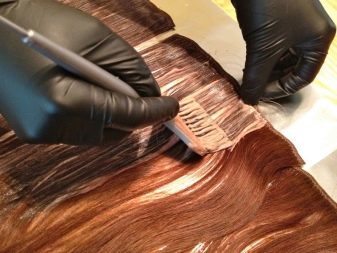
Of course, when buying a lock, you are unlikely to be able to check the quality of the hair using all the methods described, but at least three or four of them (general view, characteristic to the touch and the degree of electrification, and inconspicuous burning of the hair) will help you decide and make the right choice, not overpaying for "pseudo-natural" in case you have artificial fake.
Selection tips
When choosing natural strands, first of all, it should be borne in mind that Slavic hair is most valued in the hairdressing market, and here the main danger lies: it is not uncommon for masters in salons to offer cheaper and much lower-quality strands instead of promised curls from Slavic girls from Italy and Asia. Visually distinguishing them is quite difficult, only specialists can do this, so unscrupulous manufacturers often dye Asian curls in white shades so that they are very similar to ours in appearance and touch. To achieve the desired effect, naturally black hair is discolored with a rather concentrated oxidizing agent, due to which the color pigment is completely removed.
The structure of the hair with such an impact suffers: they become quite brittle and thinned. To hide such defects, the curls are coated with special liquid silicone, which effectively smoothes all the scales and evens the surface of the hairs. At first, such locks look very expensive and well-groomed, but once you wash your hair with shampoo only once, the whole effect instantly disappears.
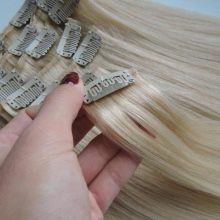
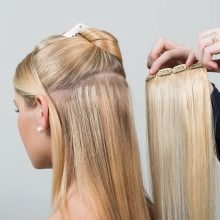
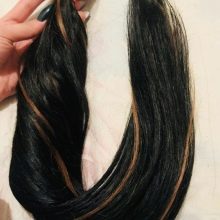
That is why the first advice when buying overhead strands is to contact only trusted beauty salons with an impeccable reputation.
An important issue is the selection of the shade of the strands. Try to find a shade that will be combined with the natural tone of the hair. Fortunately, modern locks are available in a wide range of colors, so choosing the right shade will not be a problem.
It is very important to determine in advance the desired length of the strands - hair extensions should match your hairstyle as closely as possible. For example, if you get hair on hairpins that will be much longer than your relatives, then the general impression will be the most unnatural: false hair will stand out and attract unnecessary attention.
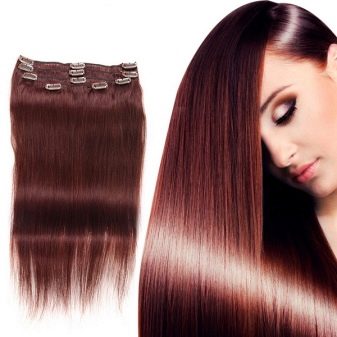
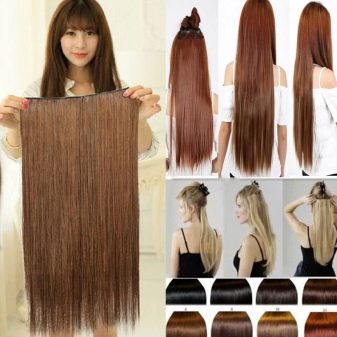
How to attach?
Attaching the hair on the clips to the head is not difficult, however, some skill is required.
- First you need to thoroughly wash your hair with balsam and dry, then make a light pile at the roots. If you have curly hair, then you can skip this step.
- The longest strands should be fixed to the occipital part, and shorter curls should be chosen on the crown and at the temples.
- The hair on the back of the head must be divided into two halves horizontally.
- Attach the prepared tracks to the formed parting and fix.
- Top should put a native curl, then continue all the same actions, moving towards the top of the head.
- The indentations between the tracks in the temple area should be wider - then the hairstyle will look more natural.
- Finally, the hair is attached to the top of the head, while the direction of the tress should be circular. If you fix the hairpins randomly, then the overall impression of the hair on the head will be messy and untidy.
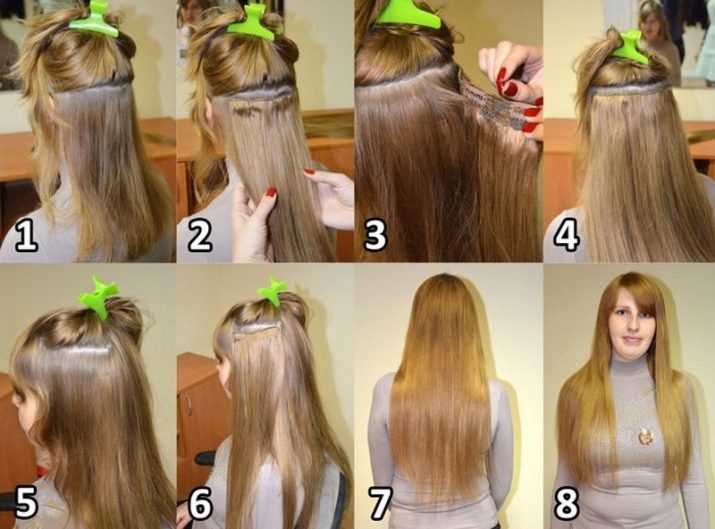
Care Tips
Real hair does not require special care, but some rules should still be followed.
- Combing is performed quite simply: by analogy with combing native curls. To do this, you need to take small strands and pass along them with a brush in the direction from the tips to the crown, gradually rising up, as if straightening them. Movements must be very careful.
- Wash your hair in warm water. To do this, the hairpiece is unfastened and lowered into a basin of water, shampoo is added there, rinsed and rinsed gently in running water.
- If you wish, you can use the conditioner after washing - then further installation will be much easier.
- At the end of the lining you need to straighten and hang on the ropes, fixing them with clothespins.
- Store false hair in a dry place.
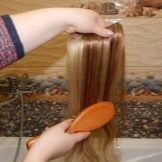
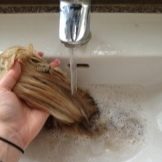
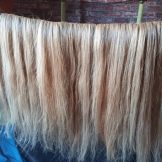
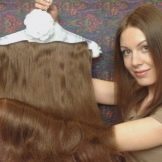
See how to properly attach hair to hairpins in the next video.
